MGT540: Case Study - Management of Change at Netflix
VerifiedAdded on 2022/11/13
|9
|852
|134
Case Study
AI Summary
This case study examines Netflix's management of change, focusing on its evolution from a DVD rental service to a streaming giant. It highlights the importance of customer relationships, core values, and adapting to market changes. The analysis explores how Netflix identifies key stakeholders, particularly customers, and builds relationships to drive business direction. It emphasizes the significance of core values in guiding a start-up's actions and how Netflix's values have shaped its customer-centric approach. The study further discusses the need for change management in a dynamic marketplace, analyzing Netflix's strategic shifts, including the introduction of original content, to maintain its competitive edge. The case study concludes by emphasizing the role of technology adoption and innovation in maintaining relevance and competitiveness within the industry.

Management of Change: A
Case Study of Netflix
Name of Student:
Name of University:
Case Study of Netflix
Name of Student:
Name of University:
Paraphrase This Document
Need a fresh take? Get an instant paraphrase of this document with our AI Paraphraser
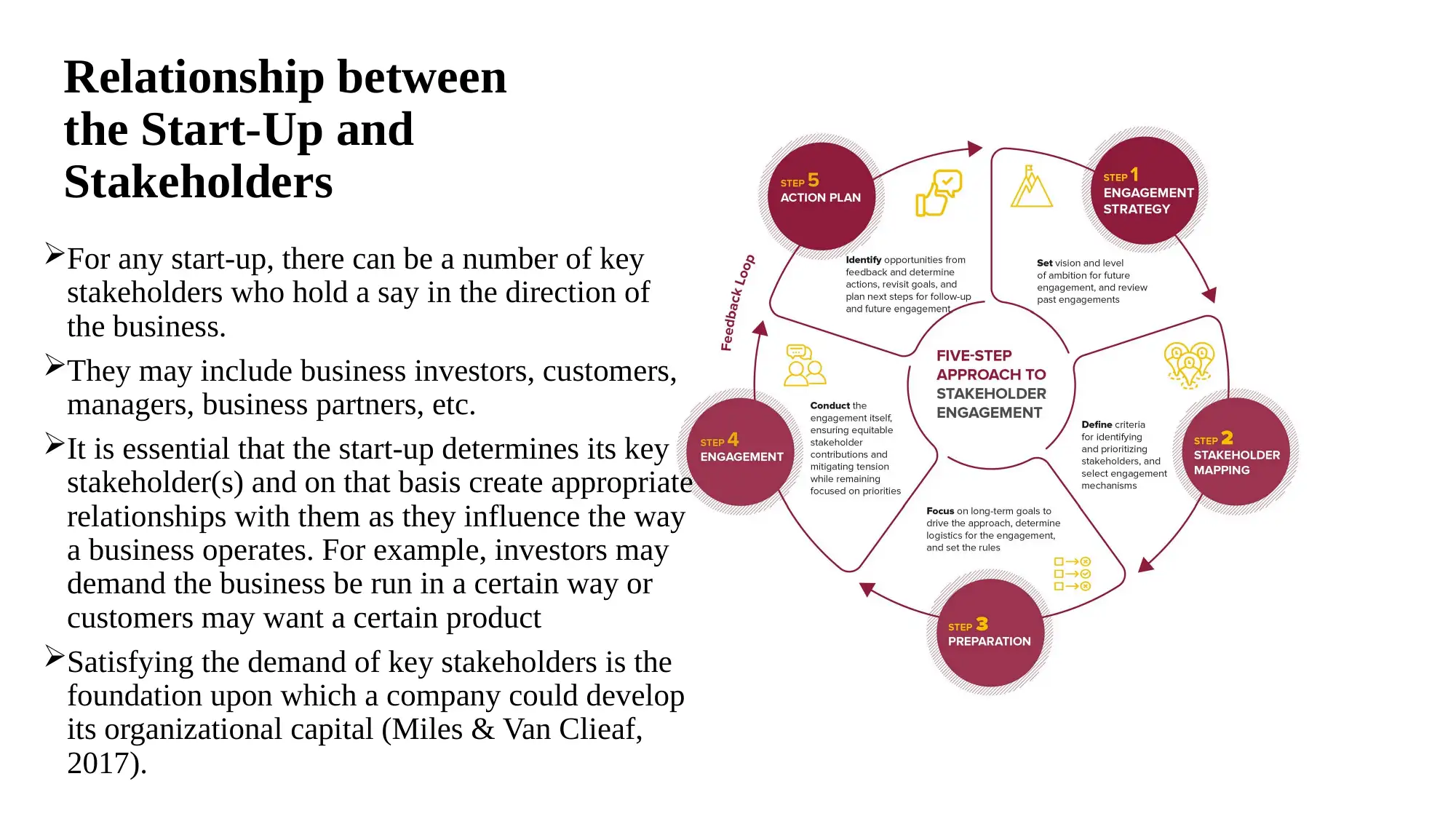
Relationship between
the Start-Up and
Stakeholders
For any start-up, there can be a number of key
stakeholders who hold a say in the direction of
the business.
They may include business investors, customers,
managers, business partners, etc.
It is essential that the start-up determines its key
stakeholder(s) and on that basis create appropriate
relationships with them as they influence the way
a business operates. For example, investors may
demand the business be run in a certain way or
customers may want a certain product
Satisfying the demand of key stakeholders is the
foundation upon which a company could develop
its organizational capital (Miles & Van Clieaf,
2017).
the Start-Up and
Stakeholders
For any start-up, there can be a number of key
stakeholders who hold a say in the direction of
the business.
They may include business investors, customers,
managers, business partners, etc.
It is essential that the start-up determines its key
stakeholder(s) and on that basis create appropriate
relationships with them as they influence the way
a business operates. For example, investors may
demand the business be run in a certain way or
customers may want a certain product
Satisfying the demand of key stakeholders is the
foundation upon which a company could develop
its organizational capital (Miles & Van Clieaf,
2017).
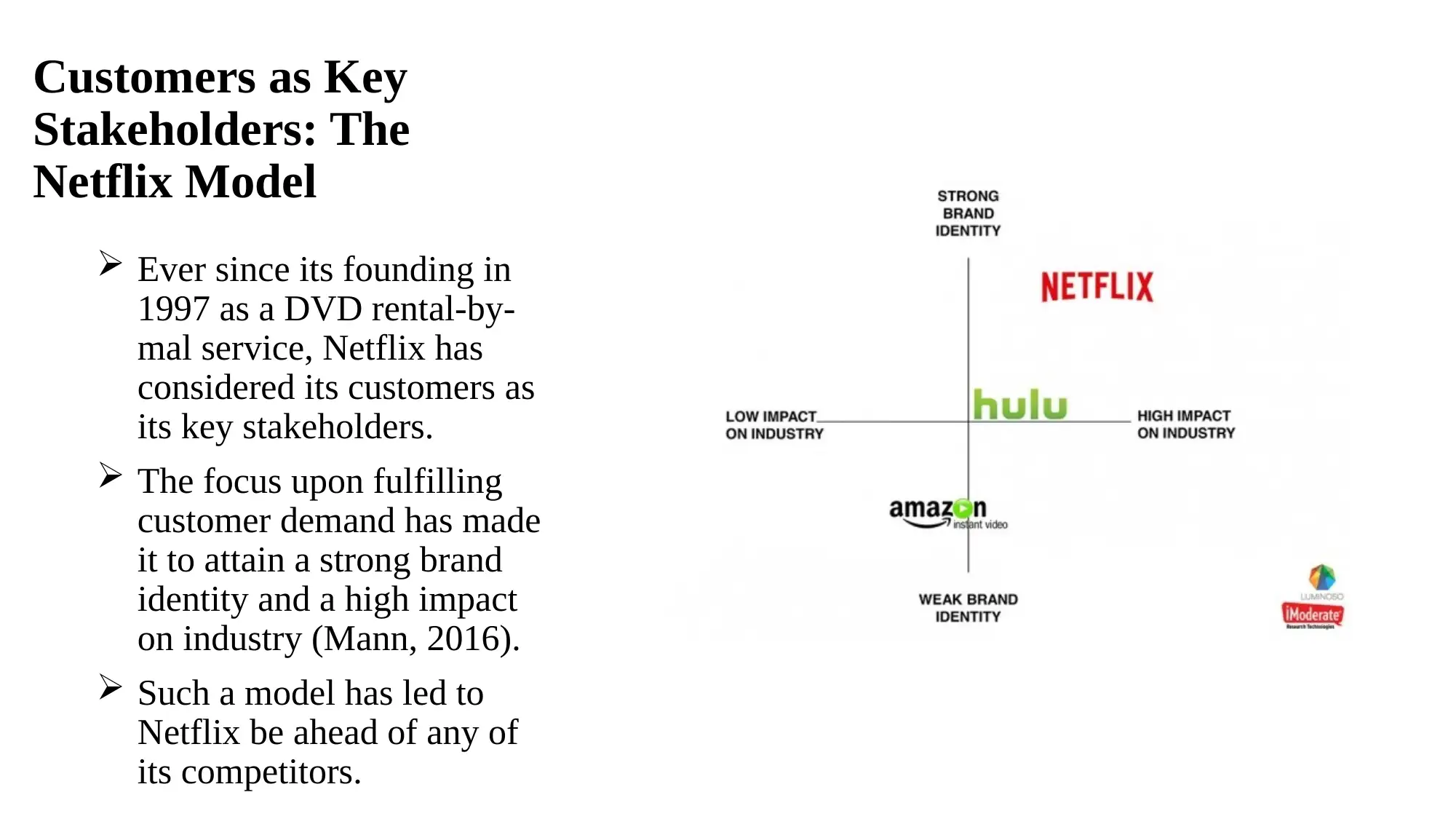
Customers as Key
Stakeholders: The
Netflix Model
Ever since its founding in
1997 as a DVD rental-by-
mal service, Netflix has
considered its customers as
its key stakeholders.
The focus upon fulfilling
customer demand has made
it to attain a strong brand
identity and a high impact
on industry (Mann, 2016).
Such a model has led to
Netflix be ahead of any of
its competitors.
Stakeholders: The
Netflix Model
Ever since its founding in
1997 as a DVD rental-by-
mal service, Netflix has
considered its customers as
its key stakeholders.
The focus upon fulfilling
customer demand has made
it to attain a strong brand
identity and a high impact
on industry (Mann, 2016).
Such a model has led to
Netflix be ahead of any of
its competitors.
⊘ This is a preview!⊘
Do you want full access?
Subscribe today to unlock all pages.

Trusted by 1+ million students worldwide
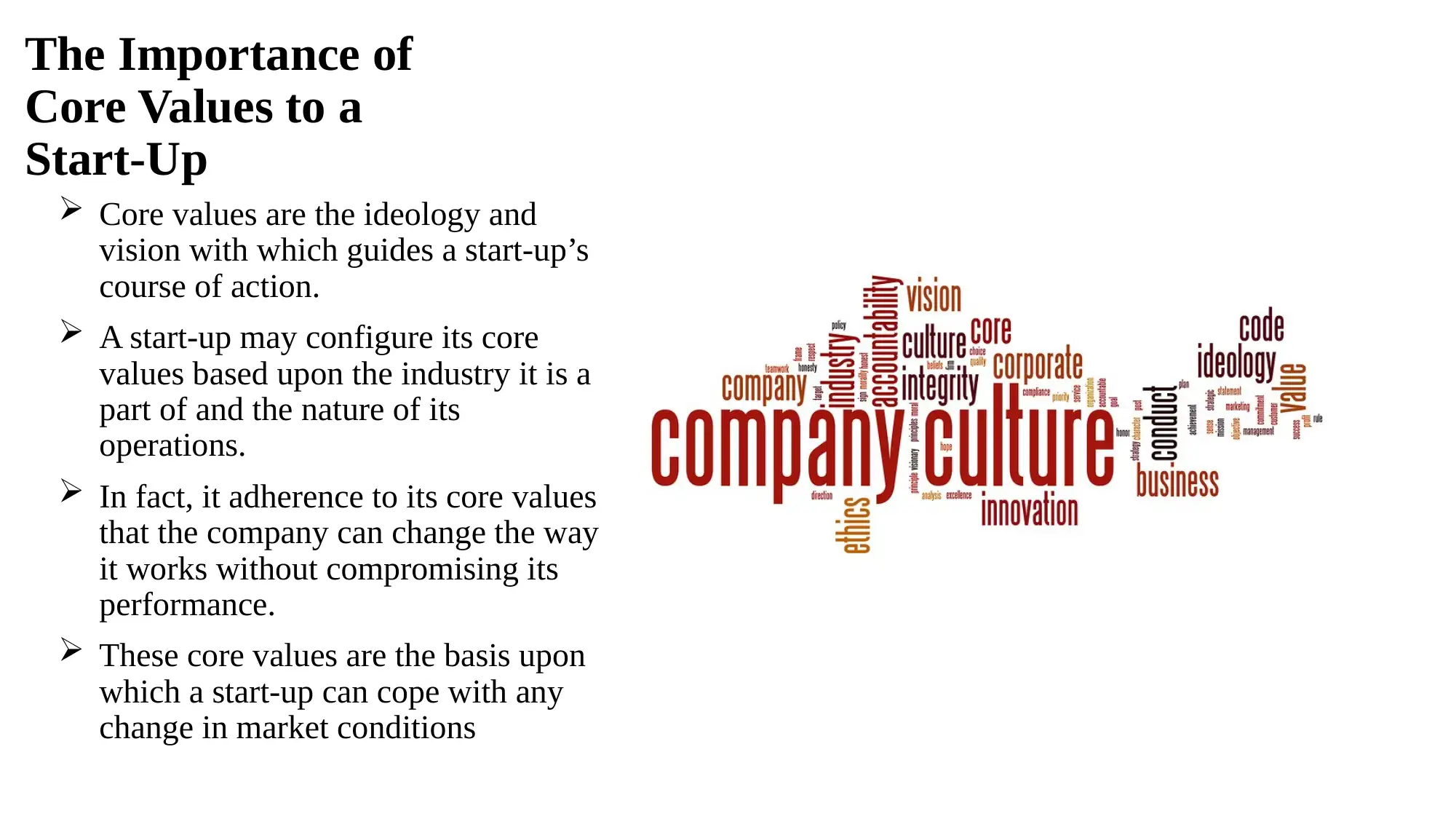
The Importance of
Core Values to a
Start-Up
Core values are the ideology and
vision with which guides a start-up’s
course of action.
A start-up may configure its core
values based upon the industry it is a
part of and the nature of its
operations.
In fact, it adherence to its core values
that the company can change the way
it works without compromising its
performance.
These core values are the basis upon
which a start-up can cope with any
change in market conditions
Core Values to a
Start-Up
Core values are the ideology and
vision with which guides a start-up’s
course of action.
A start-up may configure its core
values based upon the industry it is a
part of and the nature of its
operations.
In fact, it adherence to its core values
that the company can change the way
it works without compromising its
performance.
These core values are the basis upon
which a start-up can cope with any
change in market conditions
Paraphrase This Document
Need a fresh take? Get an instant paraphrase of this document with our AI Paraphraser
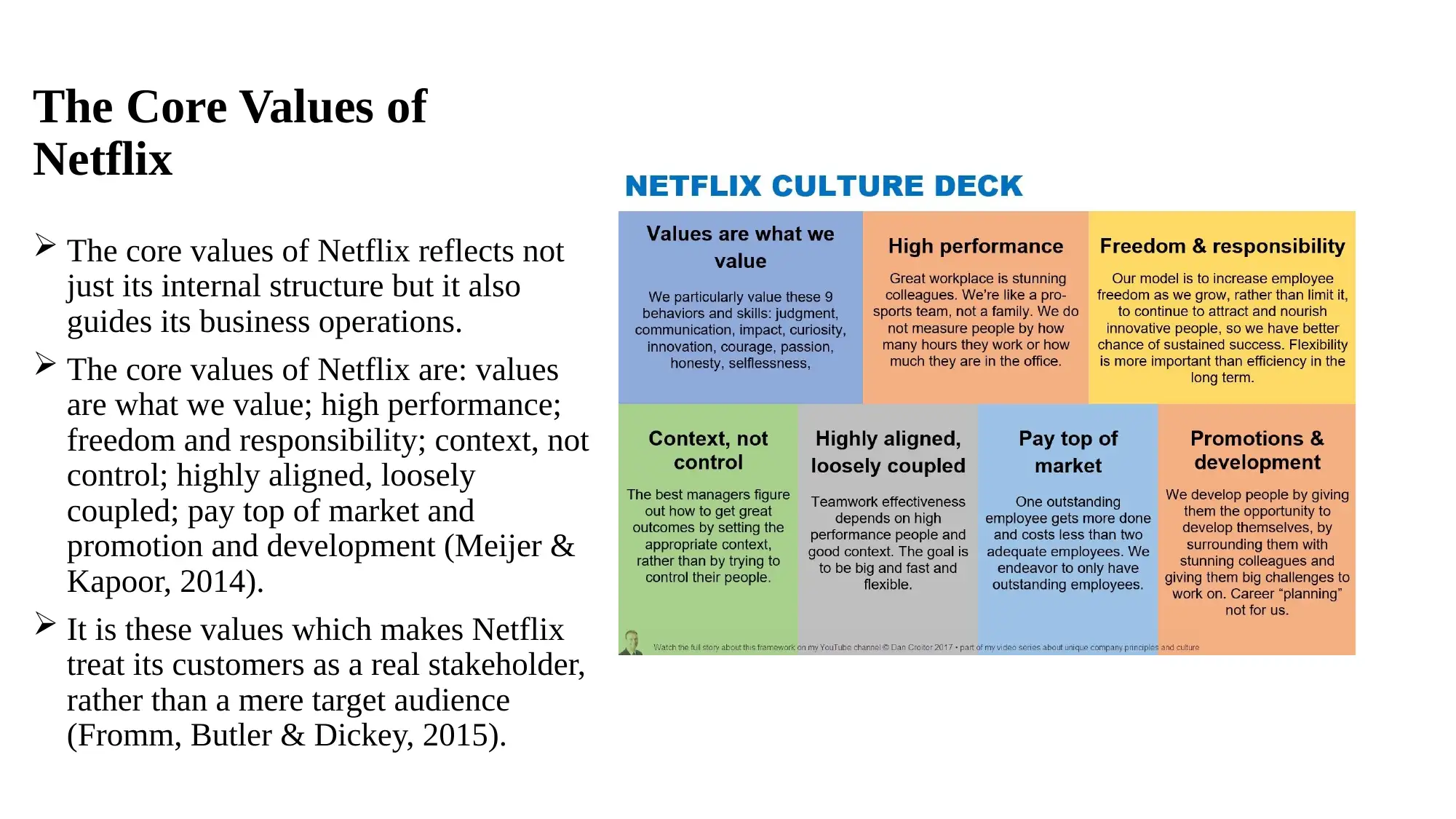
The Core Values of
Netflix
The core values of Netflix reflects not
just its internal structure but it also
guides its business operations.
The core values of Netflix are: values
are what we value; high performance;
freedom and responsibility; context, not
control; highly aligned, loosely
coupled; pay top of market and
promotion and development (Meijer &
Kapoor, 2014).
It is these values which makes Netflix
treat its customers as a real stakeholder,
rather than a mere target audience
(Fromm, Butler & Dickey, 2015).
Netflix
The core values of Netflix reflects not
just its internal structure but it also
guides its business operations.
The core values of Netflix are: values
are what we value; high performance;
freedom and responsibility; context, not
control; highly aligned, loosely
coupled; pay top of market and
promotion and development (Meijer &
Kapoor, 2014).
It is these values which makes Netflix
treat its customers as a real stakeholder,
rather than a mere target audience
(Fromm, Butler & Dickey, 2015).
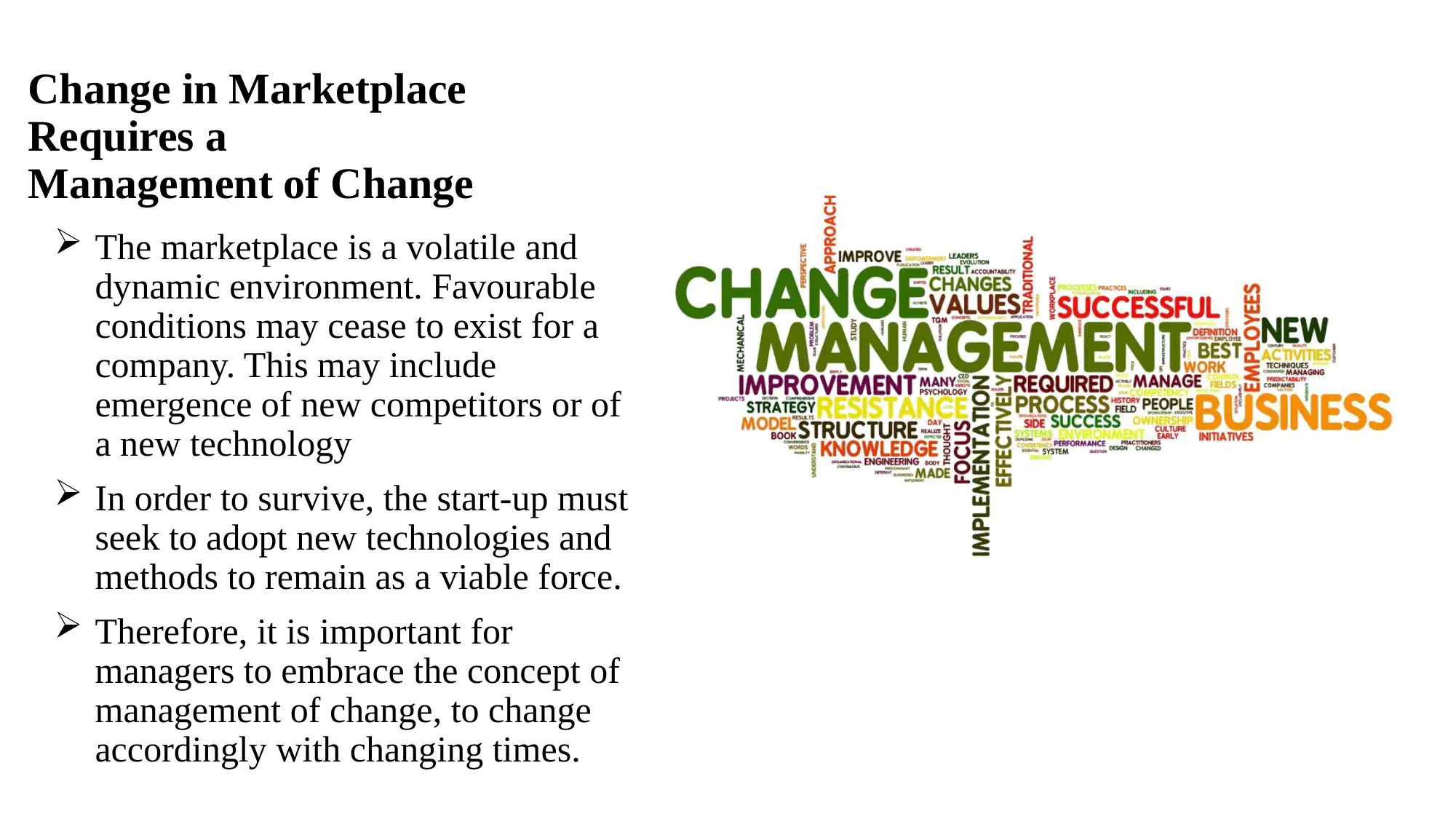
Change in Marketplace
Requires a
Management of Change
The marketplace is a volatile and
dynamic environment. Favourable
conditions may cease to exist for a
company. This may include
emergence of new competitors or of
a new technology
In order to survive, the start-up must
seek to adopt new technologies and
methods to remain as a viable force.
Therefore, it is important for
managers to embrace the concept of
management of change, to change
accordingly with changing times.
Requires a
Management of Change
The marketplace is a volatile and
dynamic environment. Favourable
conditions may cease to exist for a
company. This may include
emergence of new competitors or of
a new technology
In order to survive, the start-up must
seek to adopt new technologies and
methods to remain as a viable force.
Therefore, it is important for
managers to embrace the concept of
management of change, to change
accordingly with changing times.
⊘ This is a preview!⊘
Do you want full access?
Subscribe today to unlock all pages.

Trusted by 1+ million students worldwide
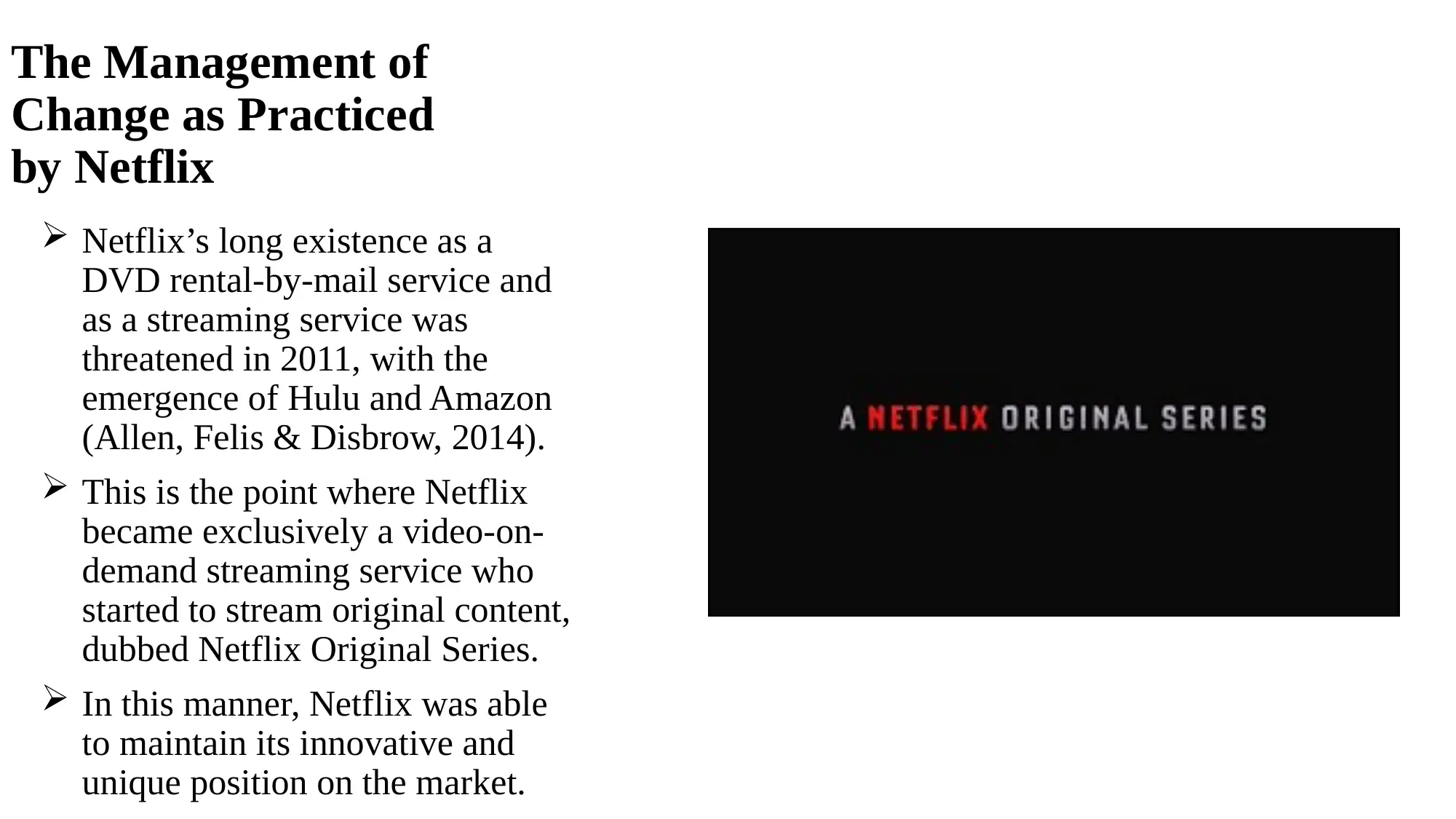
The Management of
Change as Practiced
by Netflix
Netflix’s long existence as a
DVD rental-by-mail service and
as a streaming service was
threatened in 2011, with the
emergence of Hulu and Amazon
(Allen, Felis & Disbrow, 2014).
This is the point where Netflix
became exclusively a video-on-
demand streaming service who
started to stream original content,
dubbed Netflix Original Series.
In this manner, Netflix was able
to maintain its innovative and
unique position on the market.
Change as Practiced
by Netflix
Netflix’s long existence as a
DVD rental-by-mail service and
as a streaming service was
threatened in 2011, with the
emergence of Hulu and Amazon
(Allen, Felis & Disbrow, 2014).
This is the point where Netflix
became exclusively a video-on-
demand streaming service who
started to stream original content,
dubbed Netflix Original Series.
In this manner, Netflix was able
to maintain its innovative and
unique position on the market.
Paraphrase This Document
Need a fresh take? Get an instant paraphrase of this document with our AI Paraphraser
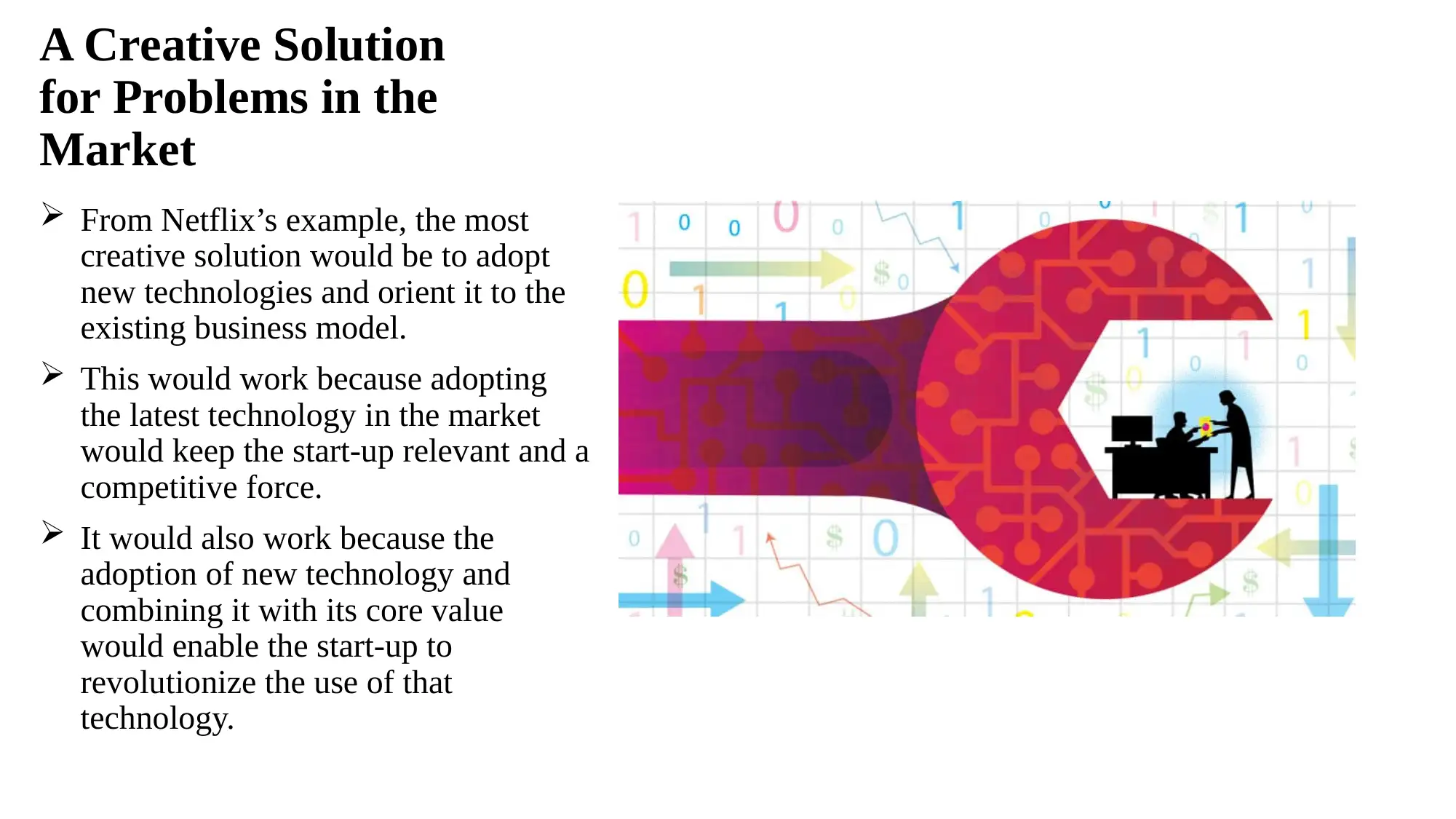
A Creative Solution
for Problems in the
Market
From Netflix’s example, the most
creative solution would be to adopt
new technologies and orient it to the
existing business model.
This would work because adopting
the latest technology in the market
would keep the start-up relevant and a
competitive force.
It would also work because the
adoption of new technology and
combining it with its core value
would enable the start-up to
revolutionize the use of that
technology.
for Problems in the
Market
From Netflix’s example, the most
creative solution would be to adopt
new technologies and orient it to the
existing business model.
This would work because adopting
the latest technology in the market
would keep the start-up relevant and a
competitive force.
It would also work because the
adoption of new technology and
combining it with its core value
would enable the start-up to
revolutionize the use of that
technology.
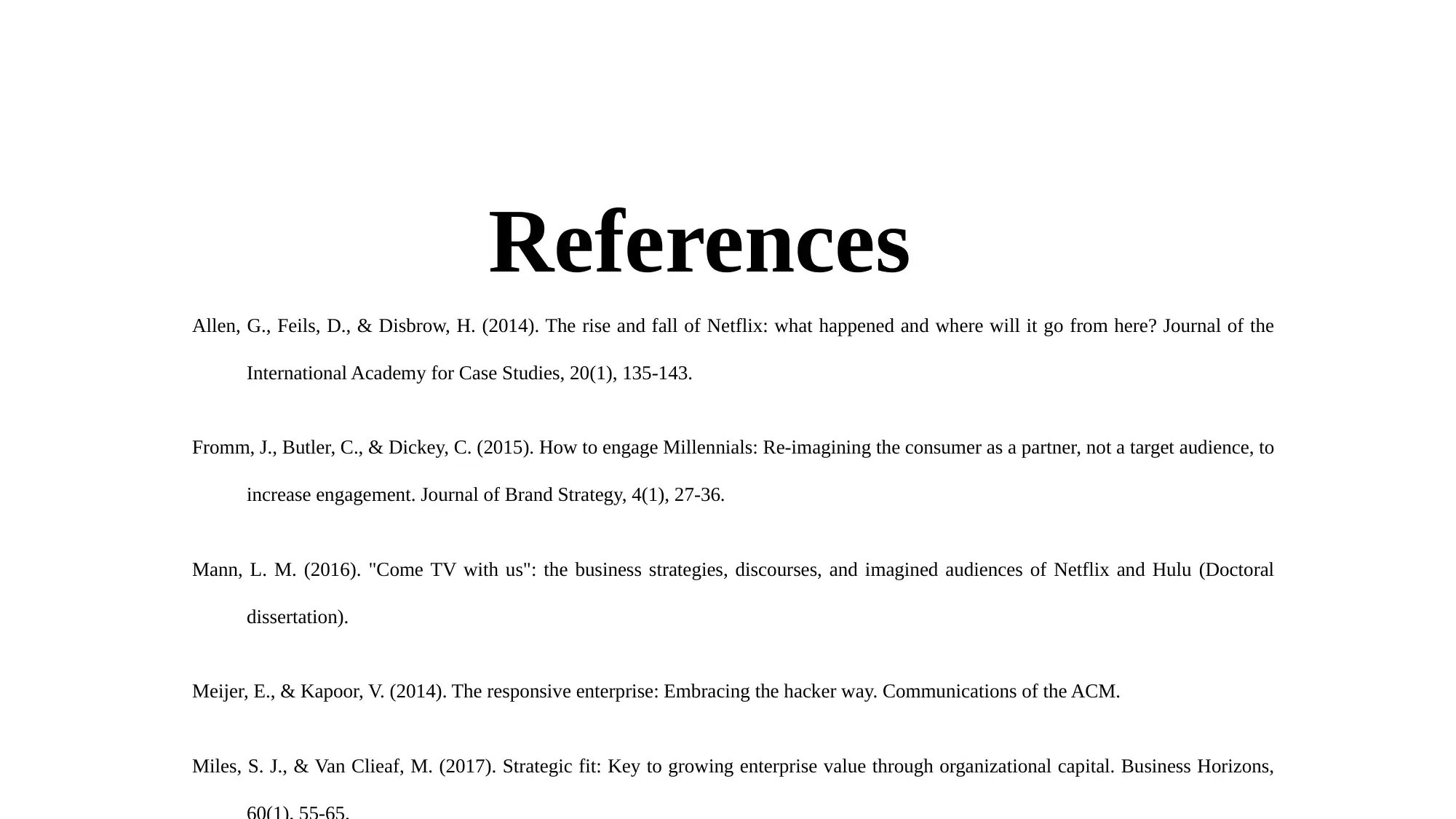
References
Allen, G., Feils, D., & Disbrow, H. (2014). The rise and fall of Netflix: what happened and where will it go from here? Journal of the
International Academy for Case Studies, 20(1), 135-143.
Fromm, J., Butler, C., & Dickey, C. (2015). How to engage Millennials: Re-imagining the consumer as a partner, not a target audience, to
increase engagement. Journal of Brand Strategy, 4(1), 27-36.
Mann, L. M. (2016). "Come TV with us": the business strategies, discourses, and imagined audiences of Netflix and Hulu (Doctoral
dissertation).
Meijer, E., & Kapoor, V. (2014). The responsive enterprise: Embracing the hacker way. Communications of the ACM.
Miles, S. J., & Van Clieaf, M. (2017). Strategic fit: Key to growing enterprise value through organizational capital. Business Horizons,
Allen, G., Feils, D., & Disbrow, H. (2014). The rise and fall of Netflix: what happened and where will it go from here? Journal of the
International Academy for Case Studies, 20(1), 135-143.
Fromm, J., Butler, C., & Dickey, C. (2015). How to engage Millennials: Re-imagining the consumer as a partner, not a target audience, to
increase engagement. Journal of Brand Strategy, 4(1), 27-36.
Mann, L. M. (2016). "Come TV with us": the business strategies, discourses, and imagined audiences of Netflix and Hulu (Doctoral
dissertation).
Meijer, E., & Kapoor, V. (2014). The responsive enterprise: Embracing the hacker way. Communications of the ACM.
Miles, S. J., & Van Clieaf, M. (2017). Strategic fit: Key to growing enterprise value through organizational capital. Business Horizons,
⊘ This is a preview!⊘
Do you want full access?
Subscribe today to unlock all pages.

Trusted by 1+ million students worldwide
1 out of 9
Related Documents
Your All-in-One AI-Powered Toolkit for Academic Success.
+13062052269
info@desklib.com
Available 24*7 on WhatsApp / Email
![[object Object]](/_next/static/media/star-bottom.7253800d.svg)
Unlock your academic potential
Copyright © 2020–2025 A2Z Services. All Rights Reserved. Developed and managed by ZUCOL.




